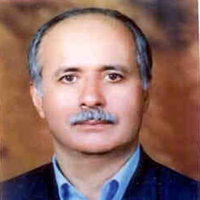The Role of Rural Housing Credit in Empowerment and Stabilization of Rural Population Case Study: Beyhagh Rural District, Sabzevar County
Author(s):
Abstract:
Introduction
Increasing of rural - urban migration, results in various consequences for the economic, social and legal systems of the country; on one hand, villages’ development indexes start to deteriorate and on the other hand, limited resources in the urban areas are insufficient for the immigrated population. Changing this trend requires a comprehensive consideration of the issues related to the rural areas, most important of which is alleviating the poverty of rural areas compared to the urban areas that can be recognized in the income, education, healthcare, awareness, knowledge, infrastructure, and physical development level of rural areas. One of the most important ways of alleviating the rural poverty is physical and economic investment, credit granting, promoting job creation, and comprehensive improvement of the living standards of the rural population, which influence their satisfaction and welfare and stability of population in such areas. One of the most important forms of investments is credit granting and in particular, micro-credit from the official resources (e.g. government). Such credits can influence the welfare and reduce the inequality among the rural population. Rural credits are granted in sectors such as agriculture, construction, healthcare, etc, and each can improve a specific aspect of rural development. Improper location, unreliable construction and low quality are among the most salient symbols of rural housing in Iran. Housing, as the cornerstone of humans’ life, responds to a wide range of individual and social needs of human beings and rural housing, as a result of its versatility, deserves more attention and consideration. Granting rural housing credit in the framework of Rural Housing Project commenced amid the 4th Development Plan and will continue throughout the 5th Development Plan. These credits are given with the goal of making resistant houses and improving the housing and physical development level of the rural areas in order to increase the satisfaction and empower the population and hinder the population immigration from these areas. This project covers all villages and towns with less than 12000 inhabitants. The importance and necessity of this research by topic: The role of rural housing creditgranting in empowerment, satisfaction with the houses and stability of the rural population lies in the increasing trend of rural-urban migration at the district level as well as the fundamental qualitative and quantitative deficits of the rural housing. Beyhagh Rural District with a Human Geography Research Quarterly, 6 arterly, No. 72, Summer 2010 population of 7375 inhabitants is located in the south of Sabzevar County and despite its affinity to the city and possessing a wide range of natural potentials, is facing a rapid rural-urban migration. This trend is created as a result of frequent droughts, lack of financial and economic infrastructure, high unemployment and lack of basic infrastructure. The present research aims to address the following questions: Main Questions 1. Have the rural housing resisting credits been successful in increasing the empowerment and satisfaction level of the population with the houses? 2. Do such credits influence the population’s tendency in staying in the rural areas? The following hypotheses have been developed with regards to the main questions of the research: Hypothesis 1: Rural housing resisting credits have increased the empowerment and satisfaction level of the population with the houses. Hypothesis 2: Rural housing resisting credits positively influence the population migration from rural to urban areas. Methodology
The statistical population consists of the two groups of credit borrowers and those who have not applied for credit. Using Cochrane formula, a group of 120 persons who used the credits and 318 persons who did not, were studied. The statistical population is spread among 21 villages with more than 20 inhabitant families and 2 villages of under 20 inhabitant amilies (Beizakh and Hossein Abad villages where the number of credit applicants were onsiderably high). This research is practical in its approach and analytical-descriptive in its methodology. For analyzing the data, various means such as maps, pictures, tables, graphs, and computer softwares such as GIS, Excel and SPSS were deployed. For testing the hypotheses and analyzing the data, Mann-Whitney test statistic was used. Results And Discussion
The results of this research show that at 99% significance evel, considerable difference can be observed in the level of satisfaction; the first group (credit users), were satisfied whereas the second group were not satisfied with their housing condition. With espect to rehabilitation, the first group considers the credit to have increased their ability to enovate their houses, while the second group indicated that without being granted credit, they ould not be able to renovate their houses. In the second hypothesis, at the 99% significance level, the first group is more inclined to stay in the rural areas compared to the second group. Conclusion
Use of credits in retrofitting rural housing, in addition to improving the housing conditions, causes the capacity for new housing construction and the villagers’ tendency to stay in villages to increase.Keywords:
Language:
Persian
Published:
Human Geography Research Quarterly, Volume:42 Issue: 72, 2010
Page:
31
magiran.com/p792775
دانلود و مطالعه متن این مقاله با یکی از روشهای زیر امکان پذیر است:
اشتراک شخصی
با عضویت و پرداخت آنلاین حق اشتراک یکساله به مبلغ 1,390,000ريال میتوانید 70 عنوان مطلب دانلود کنید!
اشتراک سازمانی
به کتابخانه دانشگاه یا محل کار خود پیشنهاد کنید تا اشتراک سازمانی این پایگاه را برای دسترسی نامحدود همه کاربران به متن مطالب تهیه نمایند!
توجه!
- حق عضویت دریافتی صرف حمایت از نشریات عضو و نگهداری، تکمیل و توسعه مگیران میشود.
- پرداخت حق اشتراک و دانلود مقالات اجازه بازنشر آن در سایر رسانههای چاپی و دیجیتال را به کاربر نمیدهد.
In order to view content subscription is required
Personal subscription
Subscribe magiran.com for 70 € euros via PayPal and download 70 articles during a year.
Organization subscription
Please contact us to subscribe your university or library for unlimited access!



